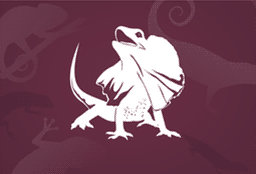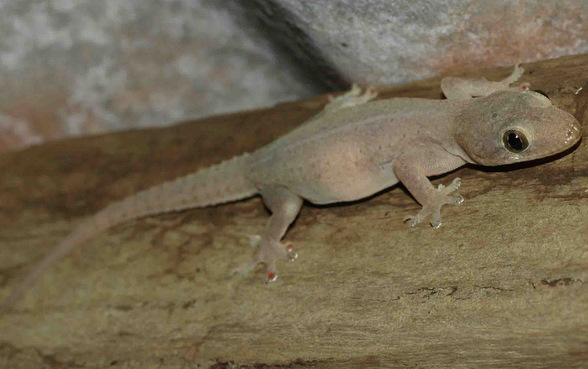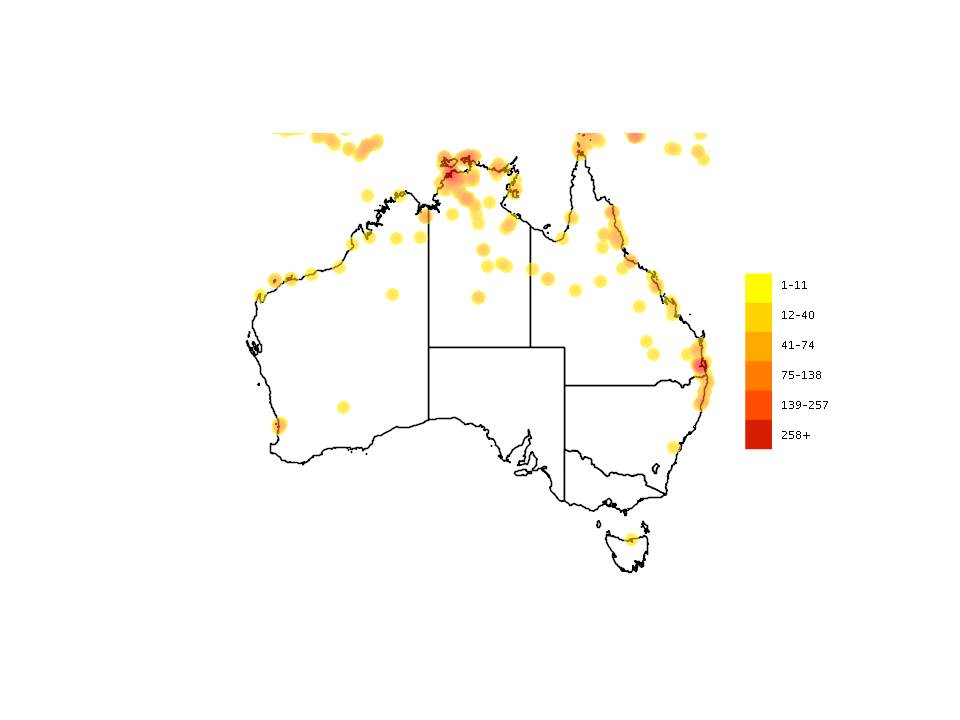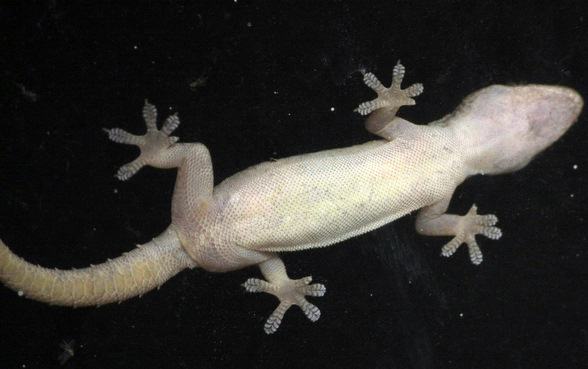Behaviour
Call
A distinctive clicking "chuck, chuck, chuck".
Diet
Any insect small enough for it to capture and swallow, including moths and wasps.
Movement
Largely nocturnal, it comes out at night to feed on insects attracted to lights. It is an agile lizard, and is often seen running along the walls of buildings.
Breeding
All year round in tropical regions, and during summer in the cooler, southern regions of its range. After mating, the female lays two round, hard-shelled eggs that are resistant to moisture loss. They are either glued to a firm sheltered surface or deposited in a crack or wall cavity.
Field Guide
Improve your identification skills. Download your Asian House Gecko guide here!





